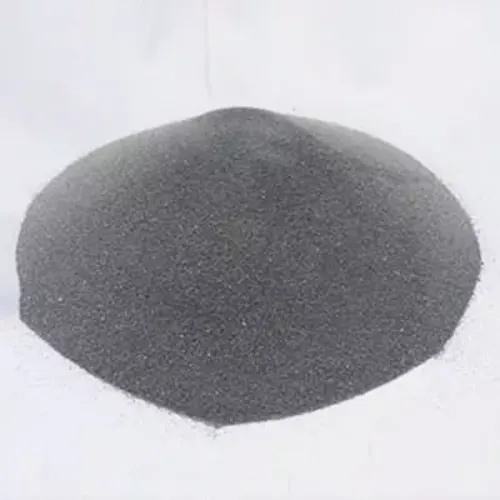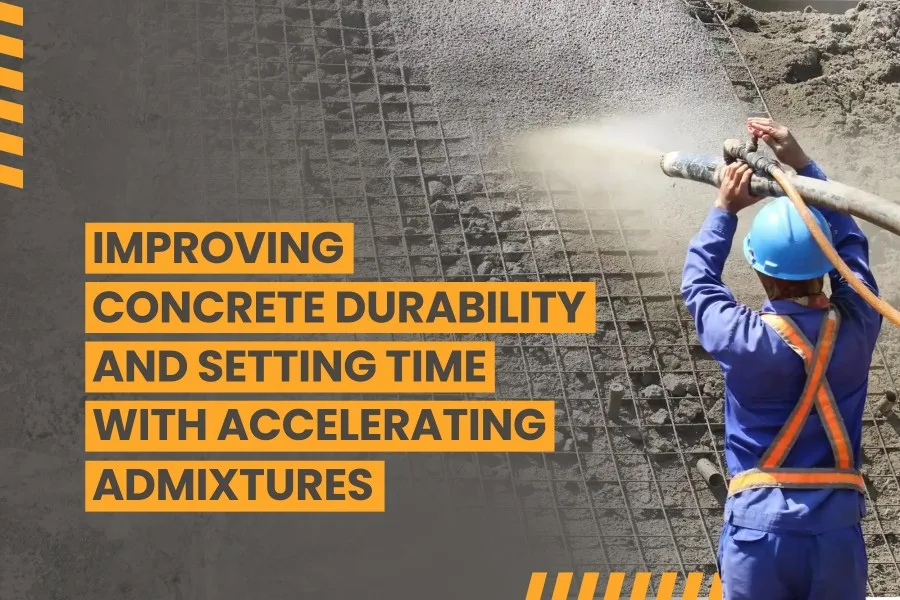Introduction
In the construction industry, where time is money and strength is king, we can agree that nothing is more important than concrete needing to set quickly and strength must last for years.
Whether you are pouring foundations, constructing highways, or erecting tall structures, concrete has to set quickly and last for decades. That’s where accelerating admixtures come into play.
Accelerating admixtures are chemical additives that accelerate the hydration of cement, allowing concrete to build early strength, and hit cold-weather milestones quicker. In short, your construction processes are moving faster, costs stay constant, and the resistance of the final structure is increased.
Table of Contents
Now let’s go further and understand how accelerating admixtures contribute towards concrete durability and provide alternatives to traditional construction schedules.
What Are Accelerating Admixtures?
Accelerating admixtures are chemical compounds added to concrete mixtures to accelerate the rate of set and the development of early strength of the concrete. Accelerated admixtures provide a much shorter path to usable strength of the concrete.
They accelerate the chemical reactions taking place inside the concrete. Great for a cold-weather pour or tight schedules.
Enable earlier stripping of formwork, faster turnaround time for precast elements, and reduced opportunity for early-stage damage.
These additives lead to hydration occurring quicker, which increases productivity and eventually helps deliver a stronger final project in less time.
Why Use Accelerating Admixtures?
They are Advantageous:
Accelerated Construction: Perfect for deadlines or rolling construction, you can transition through the stages of construction more quickly.
Fast Strength: Concrete that gains early strength in days instead of weeks will save time and risk.
Freezing Resistance: It will help resist freezing during the early curing of cold weather.
Long-lasting and Durable: Concrete that cures faster is often more dense and is less permeable, which enables better long-term performance.
Enhanced Scheduling: A faster curing time will keep you from unnecessary slowdowns of construction schedules, allowing trades to be coordinated in a timely manner and more efficiently.
Reduced Energy Use: less time curing means less energy to maintain warm concrete in cold ambient temperatures.
Cost-effective: Faster removal of forms and earlier finishing times mean costs will be reduced, and minimizing downtime will also reduce building costs.
Stressing the Benefits of Accelerating Admixtures
Accelerating admixtures perform well in many construction settings.
Cold Weather Concrete: To provide protection from frost damage in colder climates.
Precast: Faster turns minimize the time between cycles of production.
Road or Pavement Repair: Quickly allowing roads to re-open minimizes disruption.
Winter Paving: Allows crews to keep working into the lower temperatures.
Projects with Elevated Stresses: It will help with early strength gain in bridges, columns, and beams.
Shotcrete projects: Provide a fast set in underground tunnels or erosional slopes.
When building with large Volumes, Octane Strength is beneficial for speed to control heat build-up.
High-Performance Mixes: To maximize durability would benefit from a fast cure with improvements like high durability concretes.
Advantages of Accelerating Admixtures
To summarize, the key issues are:
Faster strength gain: Concrete achieves strength targets faster.
Faster formwork available: You take the forms off early and use them again.
Faster project delivery: The less time it takes to finish the project, the less time is spent on it.
Stronger concrete in the long run: Setting faster limits the potential for open cracks to increase, leading to longer-lasting concrete.
Freeze protection: Faster strength gain lowers the chance of being damaged by freezing.
High-performance mix efficiencies: Faster-acting admixtures work best with modern, high-strength concrete mixes.
Better pumpability and placement: Faster setting improves workability and reduces problems on site.
Scheduling flexibility: Faster set times can bring you back from user delays.
Less heat, less energy: Concrete that sets quicker produces less heat during curing.
Cost effective: Faster cycles mean less money spent on overhead and labor.
Admixture synergy: Works synergistically with various mixtures like plasticizers and retarders, achieving optimal placements.
Types of Accelerating Admixtures
Walter had provided a very clear list of eight of the most-used accelerated admixtures.
1. Calcium Chloride-Based Accelerators
- Excellent in speeding both setting and hydration.
- Calcium chloride is an inexpensive and effective accelerator.
- It can corrode steel, so not suitable for use when steel is incorporated without a corrosion inhibitor.
2. Non-chloride-based Accelerators
- Will not corrode steel-reinforced structures.
- Provides a rapid rate of early strength gain without corrosion potentials.
- Suitable for bridges, tunnels, and other marine and non-marine structures.
3. Alkaline Salts (Sodium/Potassium Nitrate)
- Speed up hydration with ionic activation.
- Useful for rapid setting in cold climates.
- Help limit the chance of early concrete freezing.
4. Silica Fume-Based Accelerators
- Silica fume is increase early strength and long-term durability.
- Tightens pore structure in concrete and reduces shrinkage.
- Great for high-performance projects.


5. Lignosulfonate-Based Accelerators
- Lignosulfonate is wood by-products, environmentally friendly.
- Improve workability and early strength.
- Perfect for precasting and floor finishes.
6. Organic Acid-Based Accelerators (Citric/Acetic Acids)
- Provides very fast setting times and strength gain.
- Widely used for emergency repairs or time-critical work.
7. Calcium Formate
- Calcium formate is chloride-free and non-corrosive choice.
- Speed up early strength without harming steel.
- Great for roads and underground work.


8. Hydrated Lime Accelerators
- Very beneficial for early strength and reduced cracking.
- Works well in a variety of climates while increasing efficiency.
How to Use Accelerating Admixtures?
Here is the best approach to get the results you want:
Always Measure Carefully: Follow dosage recommendations because using too much will reduce the strength of concrete.
Properly Mix: This is essential for achieving a uniform mixed state to stop uneven setting.
Mix with discretion: It’s okay to use with other admixtures; however, take note of potential interactions.
Test with a Trial Batch FIRST: Measure slump, set time, and early strength performance first.
Check Temperature: Ambient and material temperatures will influence effectiveness.
Adjust When Necessary: Use as-needed onsite to counter the changing weather or delays.
Cure Efficiently: Quick setup still requires good hydration practices to bind long term strength.
Real-World Applications
Emergency Repairs to Roads– Allows roads to open soon after they have been poured.
Highway Thaws– Allows paving crews to work cold without delays.
Precast Plants– Reduces production cycles by accelerating hardening.
In Bridge Construction– Provides load-bearing strength so that forms and cranes can be taken off earlier.
Exit Tile Floor– Supplies flooring quickly, and it keeps the disruption to a minimum.
Shotcrete Tunnels– Provides quick laying, without risking misalignment.
Wind Turbine Bases– Provides quick strength to safely stabilize a tall structure while keeping the construction schedule.
Conclusion
If you are serious about improving concrete durability, then accelerating admixtures are an excellent tool. They promote more hydration, include early strength, and can also be used with other admixtures. They become “gamechangers” in fast and demanding logistical situations.
These admixtures will help you “build smart” – reduce risk, minimize downtime, and deliver more robust structures in a faster and more effective manner. Add them to your concrete toolbox and see the difference on your next project.
Answering Common Questions
Will it affect long-term performance?
No, the proper use of accelerating admixtures can actually enhance strength.
Is it safe for Steel Reinforcement?
Chlordie accelerators are not; non-chloride can be used properly.
Is it energy inefficient?
Exact opposite—rather than working HST with the cement, you will use much less.
Sagar Telrandhe is a Construction Engineer with a B.Tech in Construction Engineering & Management. Passionate about infrastructure development, project planning, and sustainable construction, he specializes in modern construction techniques, project execution, and quality management, contributing to efficient and innovative building.

